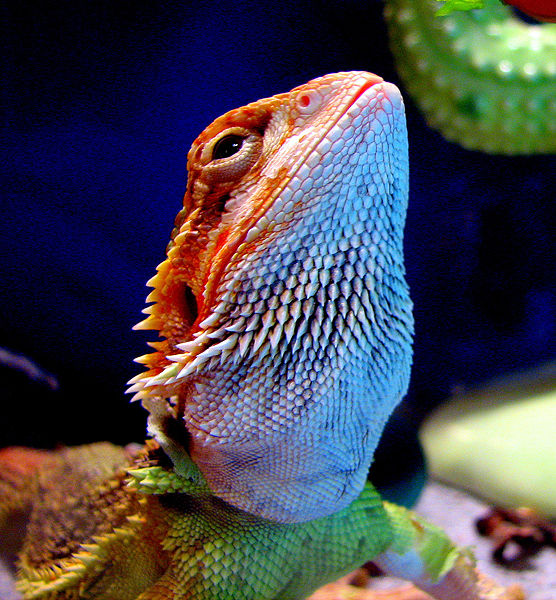
The inland bearded dragon (aka bearded dragon), Pogona vitticeps, is an extremely popular pet, both here and abroad. However, wide availability does not signify that this lizard should in any way be “taken for granted” – it is a fascinating animal, and recent research has uncovered startling facts about it. As is true for even the hardiest of lizards, the bearded dragon also has very specific needs, which must be met if it is to thrive as a pet.
Younger hobbyists may be surprised to learn that this species was virtually unknown in the USA, even in zoos, not long ago. As a youngster, I knew it only from the occasional photograph, and longed to view one in the flesh. Today, the inland bearded dragon is a pet trade staple, with thousands being bred by hobbyists each year. Oddly enough, all pet trade animals seem to have originated from a small group smuggled out of Australia (where they are strictly protected) to Germany in the early 1980’s. They are legal to own in the USA, but, technically…..
In 2005, researchers at Australia’s Melbourne University discovered, much to the surprise of the herpetological community, that the bearded dragon has glands that produce mild venom. Apparently harmless to people, the venom seems to be holdover from the distant past. Bearded dragons are the only members of their family, the Agamidae, thus far known to produce venom. Several unrelated lizards, such as the beaded lizards, Helodema horridum, Gila monsters, H. suspectum, Komodo dragons, Varanus komodoensis and lace monitors V. varius, also produce venoms of varying strengths.
The inland bearded dragon is found in central Australia and in non-coastal areas of eastern Australia. Six additional species range throughout the continent and into New Guinea. It favors dry savannah and scrub, semi-deserts, rocky outcrops and open forest. Although a ground-dweller, the bearded dragon climbs well and uses rocks and stumps as basking sites and as platforms from which to launch attacks on insects moving about below. Diurnal, it basks at temperatures of 125 F for short periods and shelters in self-dug burrows during extremely hot or cold weather.
 Bearded Dragons are among the hardiest of all lizards, and very well-suited to captivity. However, a serious viral disease to which they are prone is well-established among populations in theUSA and several other countries. Unfortunately, Atadenovirus infections, also known as Wasting Disease and Star Gazing, are incurable and difficult to detect by symptoms alone. Related viruses afflict Blue-Tongued Skinks, Fat-Tailed Geckos, Leopard Geckos, chameleons and other reptiles, birds and mammals, but infections are most commonly diagnosed in Bearded Dragons.
Bearded Dragons are among the hardiest of all lizards, and very well-suited to captivity. However, a serious viral disease to which they are prone is well-established among populations in theUSA and several other countries. Unfortunately, Atadenovirus infections, also known as Wasting Disease and Star Gazing, are incurable and difficult to detect by symptoms alone. Related viruses afflict Blue-Tongued Skinks, Fat-Tailed Geckos, Leopard Geckos, chameleons and other reptiles, birds and mammals, but infections are most commonly diagnosed in Bearded Dragons. That Reptile Blog – Reptile, Amphibian and Exotic Pet Care and Information
That Reptile Blog – Reptile, Amphibian and Exotic Pet Care and Information

